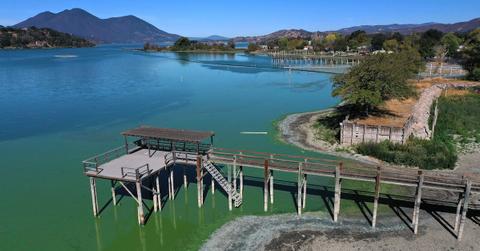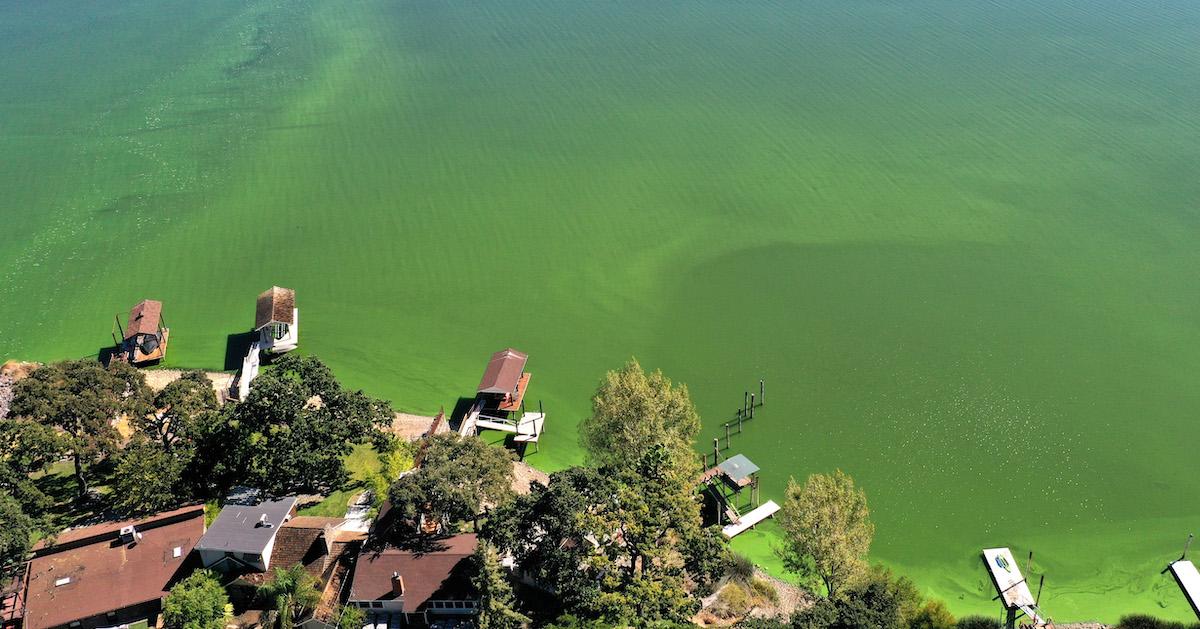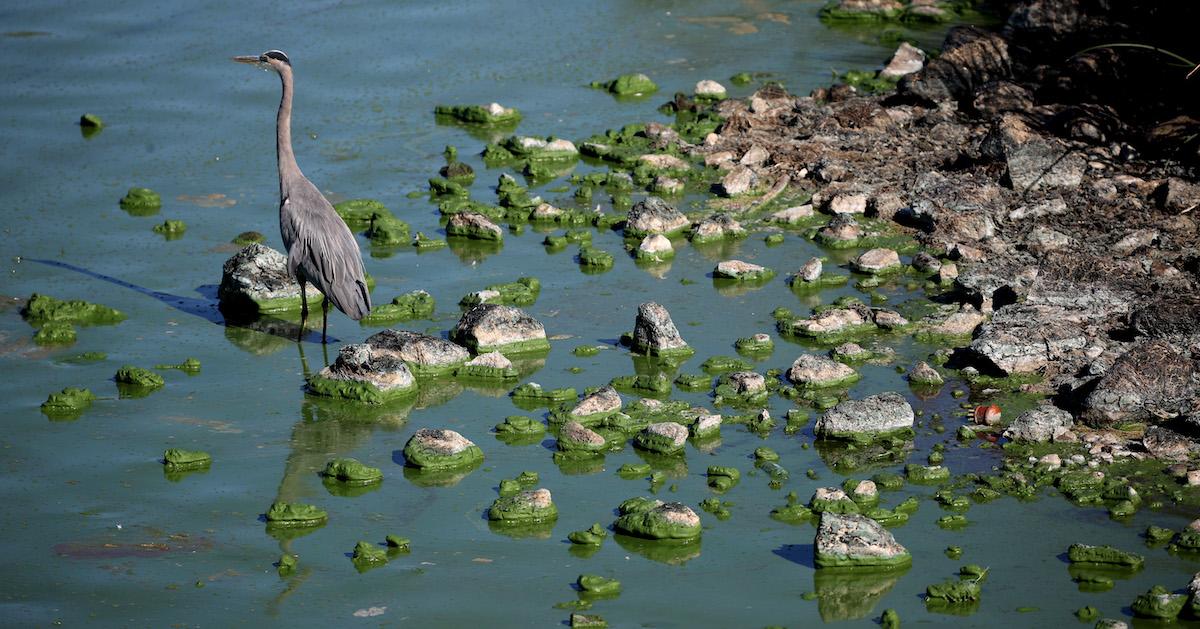Cyanobacteria, or Blue-Green Algae, Spreading Across the U.S. — Symptoms to Look Out For
Published Aug. 29 2022, 1:21 p.m. ET

As a result of irresponsible farming practices and other pollutive human activities, blue-green algae infection cases are currently surging.
Nationwide, animals and people alike are getting sick — and in some cases, facing death — from coming into contact with cyanobacteria, aka toxic algal blooms or harmful algal blooms (HABs). That's why identifying the signs and symptoms of an infection from blue-green algae is absolutely crucial, to treat it early on.
“Blue green algae are actually a form of bacteria. They usually live in moist or wet environments like lakes, and sometimes they grow a soil crust in other places,” University of Wisconsin professor, Emily Stanley, told WXPR. “They’re certainly very famous for growing in large populations that give us concern when they have these thick mats or green colors to lakes that we call blooms.”
“There have been a lot of reports in the last few years of these cyanobacterial blooms happening in places where we as lake scientists wouldn’t predict them,” Stanley continued. “These are cooler lakes, lakes that are less nutrient rich that have not historically had cyanobacterial blooms."

Toxic algae infections are surging across the U.S.
The NOAA just released some unsettling data — per The New York Post, more than 2,300 lakes and rivers, as well as 5,000 bodies of water in Alaska, are infected by blue-green algae.
Blue-green algae usually grows naturally in freshwater when the water is hot, nutrient-dense, and stagnant. It's toxic to pets and people, with different types producing different varieties of toxins. Most affect the liver, nerves, and skin — and they can be dangerous when infected, ingested, or upon dermal contact.
The NOAA has satellites that can track blooms between summer and fall, and sadly, poisoning cases amongst humans and pets have spiked drastically in the last month.
“It is extremely poisonous,” Lori Teller, President of the American Veterinary Medical Association stated, via The New York Post. “Whether you’re swimming in it, drink it, eat it, breathe it in, it can cause vomiting, diarrhea, breathing difficulties, and it can even cause seizures and death.”
A 2019 study looked at how common blue-green algae poisoning is, and the results showed that 63 humans and 397 animals were infected across only 14 states. Though no people died, 56 percent of the animals — consisting of pets, livestock, and wildlife — died. These massive numbers led the authors to believe the results were underreported.
To catch infection early, though, what are the symptoms of blue-green algae poisoning?
What are the signs and symptoms of blue-green algae contamination?
Though not all blue-green algae produces toxins, it's important to know the symptoms of exposure.
As previously mentioned, according to the New York State Department of Health, people and animals can be infected by HABs if touched, swallowed, or if the vapors are inhaled. For humans, it can trigger digestive issues; irritation of the skin, eyes, or throat; respiratory problems, and even allergic reactions — these may require immediate medical attention.
For pets, livestock, and wildlife, the symptoms of coming into contact with a toxic algal bloom can look a little different.
Per Sea Grant New York, animals tend to show signs and symptoms of a blue-green algae infection within 30 minutes. For liver toxins, you might notice: vomiting green liquid, diarrhea or bloody stool, loss of appetite, jaundice, abdominal swelling, skin discoloration, or urinary problems.
For nerve toxins you may notice loss of balance, paralysis, excessive drooling, disorientation, or heart problems. And for skin toxins, look out for skin rashes or hives.
If you think an animal has come into contact with toxic algae, seek vet attention immediately.

What triggers toxic algal blooms?
Toxic algal blooms are largely triggered by human activities. Certain types of nutrient-dense fertilizers and manures contain microcystin, a potent liver toxin and potential carcinogen. When it rains, runoff can contaminate nearby bodies of water.
They are also occasionally triggered when waters are warm and stagnant — often a result of global warming.